Stop 1: Making the Modern World
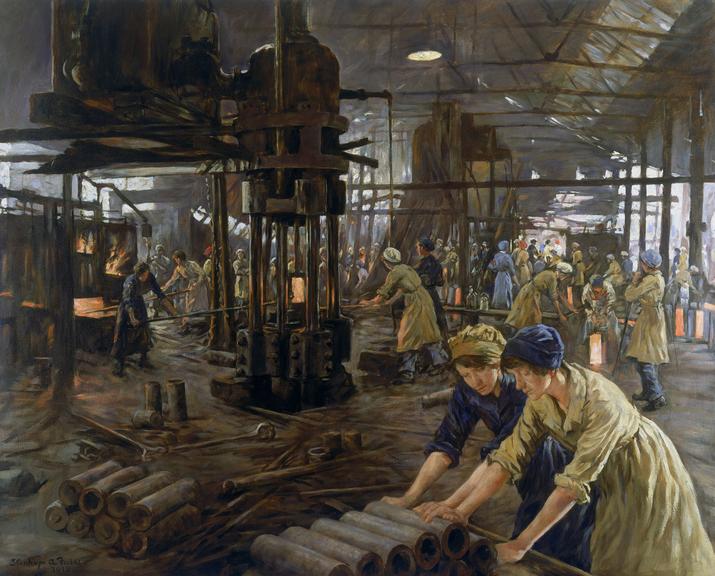
The first stop on our tour is the Making the Modern World gallery. Situated on the ground floor, you can find Alexander Stanhope Forbes’ ‘The Munition Girls’, a lively oil-painting which showcases the working women of Kilnhurst Steelworks during the First World War.
Munition workers were often nicknamed ‘canaries’ because of the distinctive yellow colouring on their skin and hair, caused by trinitrotoluene (TNT).
Stop 2: Medicine: The Wellcome Galleries
Next, we are off to Medicine: The Wellcome Galleries. Situated on the first floor, the galleries contain a series of commissioned artworks which act as powerful visual interventions into the galleries’ themes.
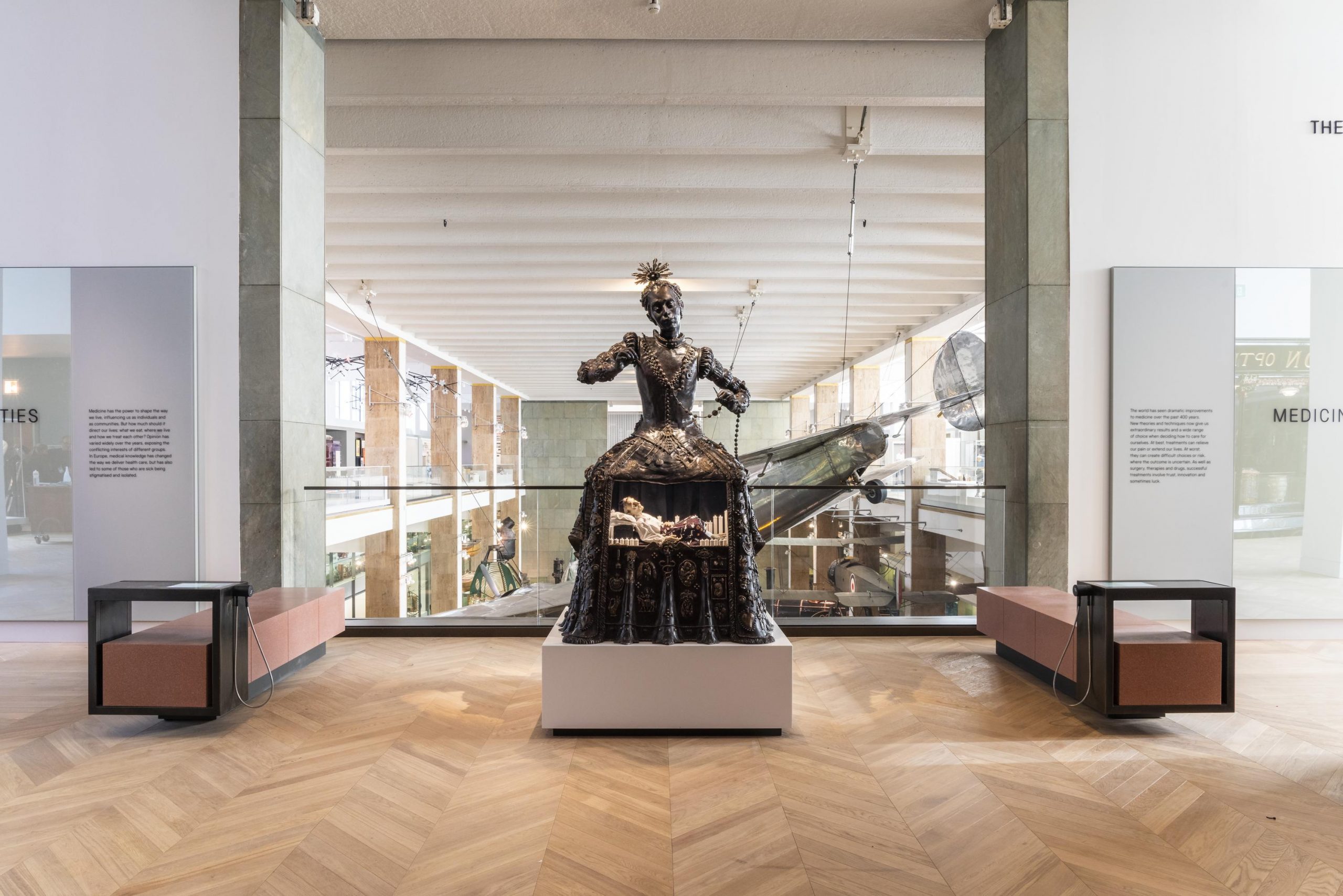
The artworks include Self-Conscious Gene by Marc Quinn, inspired by the tattooed body of model Rick Genest; Bloom by Studio Roso, an aerial sculpture which represents the spread of diseases through populations; Santa Medicina by Eleanor Crook, an intriguing bronze sculpture of a figure that is both surgeon and saint; and a series of life-size portraits of patients and practitioners by award-winning photographer Siân Davey.
Stop 3: Medicine: The Wellcome Galleries
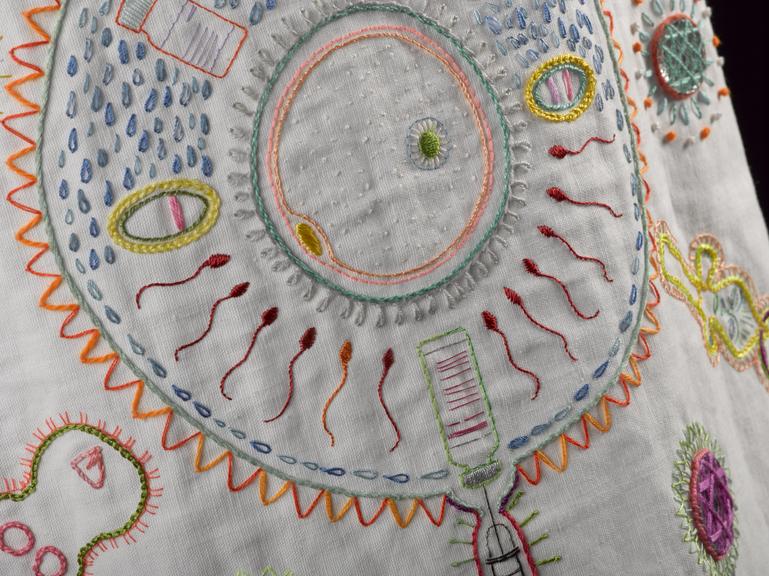
Another Medicine gallery must-see is ‘Investment: Tabitha’s Gown‘, a hand-embroidered hospital gown by visual artist Tabitha Moses which illustrates her fertility story.
Moses depicts the embryos that did not work out, a streak of blood which represents her miscarriage and other embroidered symbols which describe her IVF experience.
Stop 4: Mathematics: The Winton Gallery
Next up, we have Mathematics: The Winton Gallery. Designed by Zaha Hadid Architects, this bold and thought-provoking gallery is situated on the second floor.
Here, you will find a beautifully intricate ’anamorphosis’ painting of a ship model, painted between 1744 and 1774. Using a cylindrical mirror, viewers can see a more familiar view of the ship’s stern when viewed at a certain point.
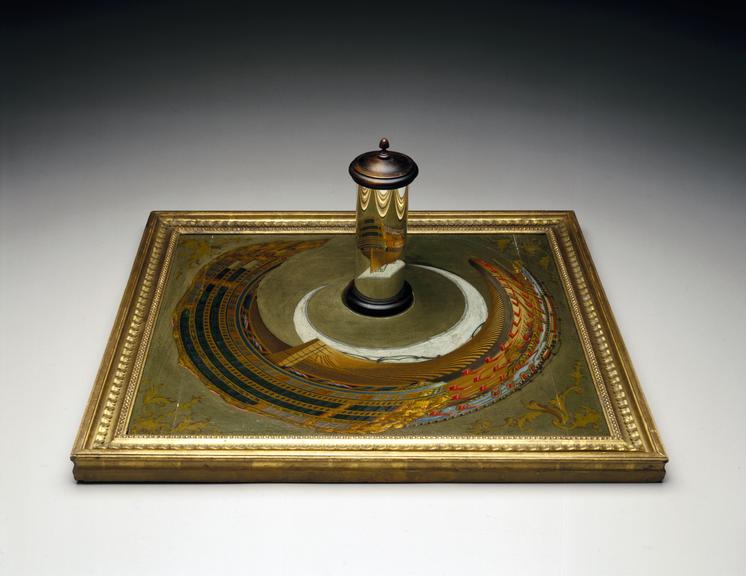
Stop 5: Who Am I? Gallery
For the final stop on our tour, our Who Am I? Gallery. Who Am I? is situated in the museum’s Wellcome Wing and reflects on the big questions that new techniques in science are raising.
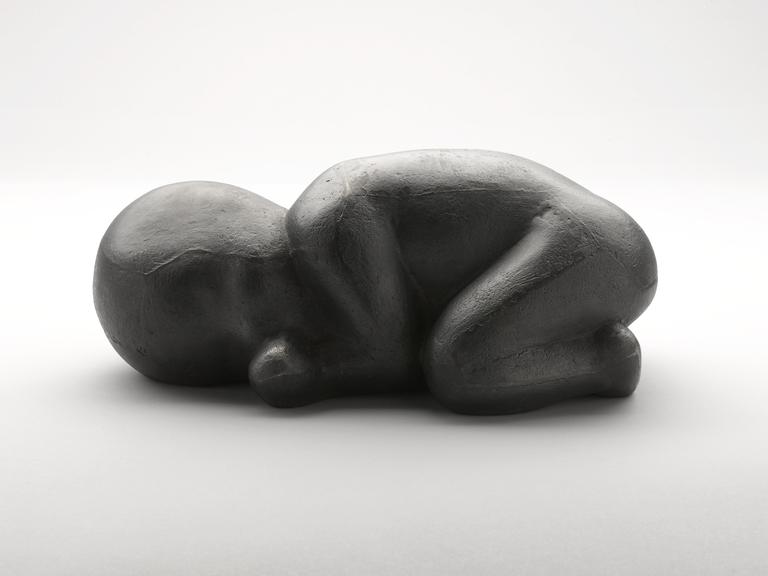
On the gallery floor, you will find Antony Gormley’s ‘Iron Baby’ sculpture, a cast-iron sculpture of a life-size newborn baby. His work investigates the relationship we have with our surroundings, and the incongruous sight of the tiny Iron Baby, makes a powerful statement about the vulnerability of humans.
Explore our collection at home
If you’re not able to visit us in person, the art in the Science Museum Group Collection is available for you online.
We care for over 25,000 works, from paintings to digital installations, technical diagrams to abstract responses, portraits to landscapes.
These items are full of stories of artists and scientists interacting, inspiring or even critiquing each other.
You can browse our collection online here.
The Science Museum is open 10.00-18.00, seven days a week (last entry 17.15). Head to our website to pre-book your free tickets.
Visit the official print sales site of the Science Museum Group to purchase railway posters, vintage photography prints and artwork for your home.